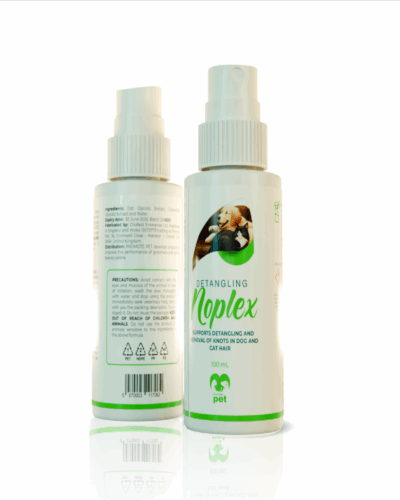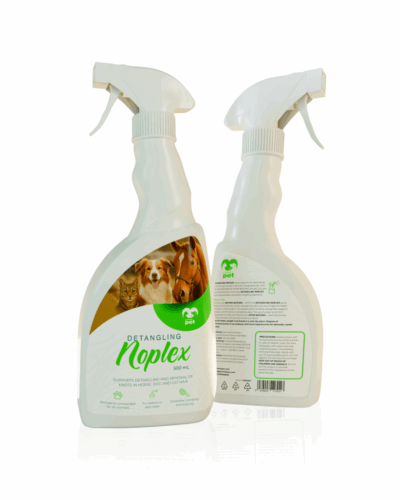Free delivery for orders over £45

The Importance of Proper Identification Tags for Dogs
Table of Contents
Ensuring your pet’s safety is a top priority, and dog ID tags play a crucial role in the UK. By equipping your furry friend with a proper ID tag, you significantly increase the chances of a safe return if they wander off. In this guide, we will explore essential pet safety tips, focusing on the importance of dog ID tags and practical insights to keep your pet secure. Let’s delve into the details of selecting the right tag, the legal requirements, and how to maintain them effectively.
The Importance of Dog ID Tags in the UK
In the UK, ensuring your furry friend has a proper identification tag is not just a legal requirement but also a crucial aspect of pet safety. Effective dog ID tags play a vital role in reuniting lost dogs with their owners promptly. When a dog goes astray, a clear and easily visible ID tag can significantly increase the chances of them being safely returned home. This immediate identification can save dogs from unnecessary time spent in shelters or being possibly adopted by other families.
Given the diverse environments encountered in the UK, from bustling cities to countryside escapes, a sturdy and durable dog ID tag is essential. Adding a dog’s name, your phone number, and your address ensures that anyone who finds your dog can contact you immediately. Furthermore, stating that the dog is microchipped can offer an additional layer of security.
In different situations, such as travelling or when moving homes, updating the information on the dog’s tag becomes of utmost importance. Regular checks should be made to ensure that the tag is not worn out and that the details are accurate and readable. By keeping your pet’s ID tag current, you provide peace of mind knowing that you have done everything possible to keep your canine companion safe.
Cultural and Legal Awareness
Awareness regarding the significance of dog tags goes beyond legislation. It encompasses understanding your responsibility as a dog owner to facilitate your pet’s swift return in case they wander off. Tags serve as a straightforward yet powerful tool in ensuring your dog’s safety and enhancing the likelihood of their swift recovery.
Selecting the Right Dog ID Tag Material
When choosing the right material for your dog’s ID tag, several factors come into play, including durability, cost, and aesthetics. Durable materials ensure that the tag withstands everyday wear and tear while remaining legible. Stainless steel and brass are popular choices due to their robustness and corrosion resistance, making them ideal for active dogs. Aluminium, although lightweight and often cost-effective, might not offer the same longevity for those more adventurous canines exposed to rough outdoor environments.
Anodised aluminium provides an additional layer of protection against scratches and tarnishing, while also offering vibrant colours for a stylish look. Material choice should also consider how the tag fits with your dog’s collar and overall comfort. No one wants a heavy tag clattering with every step, right?
Some modern options include silicone tags, which are known for being silent and gentle on your pet’s coat, though they may not display text as vividly as metal alternatives. Laser-engraved tags ensure that the vital information remains readable over time, regardless of the material chosen.
Cost-effectiveness is another factor to consider. Balancing affordability with quality can help ensure you select the best tag. While high-end materials might come with a larger upfront investment, their durability often compensates for the cost in the long run by avoiding frequent replacements.
The ultimate goal is to ensure the tag meets practical needs while also reflecting your dog’s personality. Choosing the right material means your furry friend’s vital information stays intact and stylish for years to come.
Information to Include on Dog Tags
When designing a dog tag, it’s essential to include crucial information that ensures the quick and safe return of your pet in case they get lost. At the very least, the tag should include your dog’s name, which helps strangers comfort and address your pet if found. Next, a prominent feature should be your contact number. Including a mobile number can be more effective, as you’re more likely to be reachable at any time.
Consider adding an address but keep personal safety in mind; your postcode or street might suffice for a pet’s return. Additionally, some owners opt to engrave their veterinarian’s contact details or microchip number on the tag for further assurance. This can be invaluable if your dog is found injured or overreactive, giving accesses to medical history quickly.
For those traveling frequently with their pets, a temporary tag with specific travel information might be useful. In such cases, ensure everything is readable, with clear and distinct engravings. If there’s space, including a small message like “Needs Medication” can serve as a reminder for urgency in certain situations. Lastly, it might be beneficial to include “Reward if Found” to provide an incentive for whoever finds your pet to make that crucial phone call immediately.
Ensure that the text on the tag is legible and large enough to be read with ease, while still maintaining durability and attractiveness. Regular checks to ensure details remain visible are crucial as wear and tear can obscure vital information over time.
Creative and Stylish ID Tag Designs
Exploring the realm of creative and stylish ID tags opens up numerous possibilities for pet owners looking to add a touch of flair to their furry friend’s identification. Beyond the practicality, these tags can reflect your dog’s personality or complement its appearance. From tags shaped like bones to those embellished with jewels, there’s something to fit every taste.
One popular trend is custom engraving, which allows you to include not only essential contact information but also fun elements like symbols, or a short quote. This creative approach enables the tag to double as a fashion accessory, contributing to your pet’s unique identity.
Another option is to consider materials that offer more customisation. Wood and resin can create visually appealing ID tags that stand out. These materials are excellent canvases for colourful designs or interesting textures. Engravings on these surfaces often appear more pronounced, enhancing legibility and ensuring durability.
One of the key benefits of having stylish ID tags is their role in quickly catching the eye. In instances where your dog might wander off, an eye-catching tag can lead to faster identification and quicker reunions with their owner. This aesthetic appeal does not compromise on functionality but rather complements it through enhanced visibility.
Thus, combining style with practicality in dog ID tags addresses both the need for proper identification and the desire for personalisation. These tags not only serve as a crucial safety measure but also allow your beloved pet to wear an expression of its unique character every day.
How Dog Tags Contribute to Pet Safety
Dog tags play a crucial role in enhancing pet safety. These small metallic or plastic tags attached to a dog’s collar are essential tools for ensuring your pet can be identified quickly in various situations. Lost pets often return home faster when wearing clear, readable tags. These tags act as the first line of defence when a dog strays from home or gets lost in unfamiliar areas. With detailed information, a dog tag connects the good Samaritan or animal control officers with the pet’s owner without delay.
Immediate Identification
In emergency scenarios, such as an accident or evacuation, time is of the essence. Quick access to vital information on the dog’s identity can save time and facilitate safe reunions. Dogs without these tags face higher risks in uncertain events, leading to prolonged separation from their families.
Tags Help Avoid Long Shelters StaysWhen dogs are picked up by authorities and placed in shelters, it may take days or even longer before being identified and returned if they lack tags. This situation not only causes distress to the animal but also places an unnecessary burden on shelter resources. By ensuring your dog wears a tag, you are contributing to reduced shelter populations.
Moreover, dog tags can offer immediate contact options that are crucial for potential rescuers. Having a phone number, or alternative contact information, gives more than one venue for communication, increasing the chances of a swift recovery.
Ensuring that the details on the tags are always current keeps your pet’s safety at the forefront. This includes updating phone numbers, addresses, or other critical contact details, ensuring nothing is outdated. This small precaution aids tremendously in cases of emergencies.
Legal Requirements for Dog Tags in the UK
Ensuring that your dog wears the correct identification tags is not just a matter of best practice; in the UK, it is a legal mandate. Under UK law, specifically the Control of Dogs Order 1992, every dog in a public place must wear a collar with the name and address of the owner inscribed on it, or on a tag or plate attached to it.
Information Required: It is essential to remember that the owner’s name and address are the minimal legal requirements. Although not compulsory, including a contact phone number is advisable as it can expedite the safe return of your pet should they become lost. Avoid including the dog’s name on the tag for security reasons; doing so can help prevent theft.
The legal stipulations are in place to ensure that dogs can be swiftly reunited with their owners, reducing the burden on animal shelters and local authorities. Non-compliance can lead to fines of up to £5,000, underscoring the significance of adhering to these legal obligations.
Considerations: While selecting the inscription method, ensure that the text on the tag is clear and legible. Engraving is commonly recommended for its durability. It’s also vital to check local regulations, as requirements may vary slightly by region.
Being aware of these legal requirements and ensuring compliance not only helps in keeping your pet safe but also aligns you with national legislation. Always ensure that the information on the tag is up-to-date to prevent any legal implications.
Maintaining and Updating Dog ID Tags
To ensure your dog’s ID tags are always effective, it is crucial to regularly maintain and update them. Constant wear and tear can cause engraving to become less readable, or altogether rub off. Periodically inspect your dog’s tags for signs of damage or fading. A simple constitutional check-up can help in identifying when the tags need replacement or updating.
You must also update the information on the tags promptly whenever there’s a change. Whether it’s a new address, phone number, or even a change in the pet’s health information, inaccurate tags can lead to confusion and delay in reuniting lost dogs with their owners. Ensure that you use proper and clear engraving methods that can withstand the effects of time and exposure.
Cleaning dog ID tags with mild soap and water ensures they remain readable and in the best condition. Exposure to different elements could tarnish or wear off vital details crucial for identification. Therefore, consider using durable materials that ensure longevity and readability.
Finally, it’s worth exploring technological advancements that integrate with traditional tagging to elevate the safety and traceability of your pet. QR codes or GPS-enabled tags may be an option worth considering. Combining traditional metal tags with modern solutions could increase the reliability of the identification process.
Contact Us
- +44 07391626201
- info@promotepet.com
- 16, Cromwell Close - Oxford - UK
COPYRIGHT © PROMOTE PET. ALL RIGHTS RESERVED. © 2024 Chofard Enterprise Ltd. Chofard Enterprise is a company registered in England and Wales with a company number 13073779 VAT number GB 370644889. 16, Cromwell Close, Oxford OX30RW, United Kingdom – trading as Promote Pet Online Shop.











